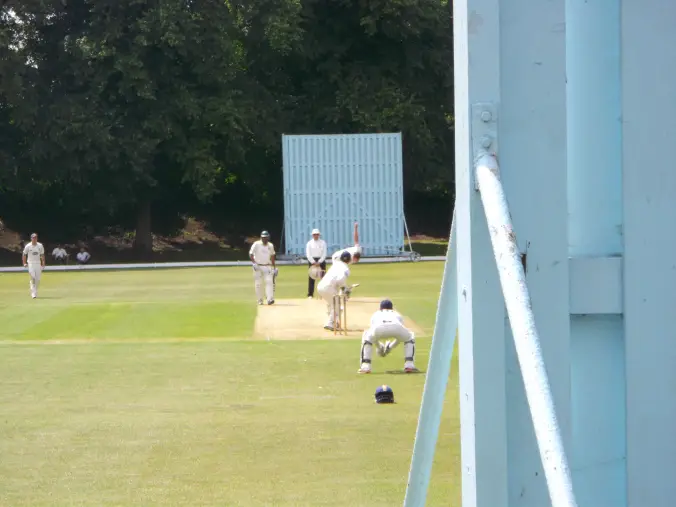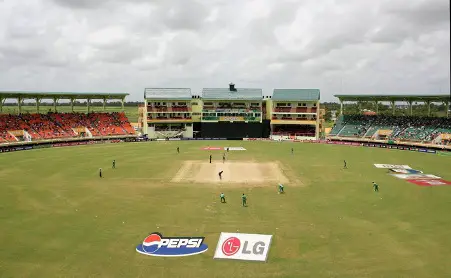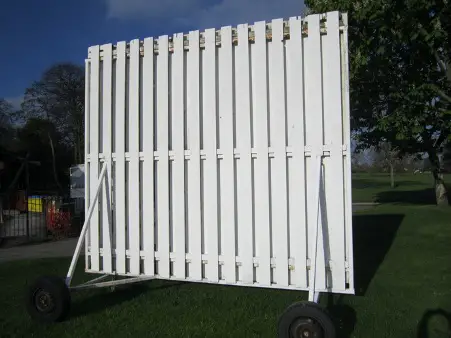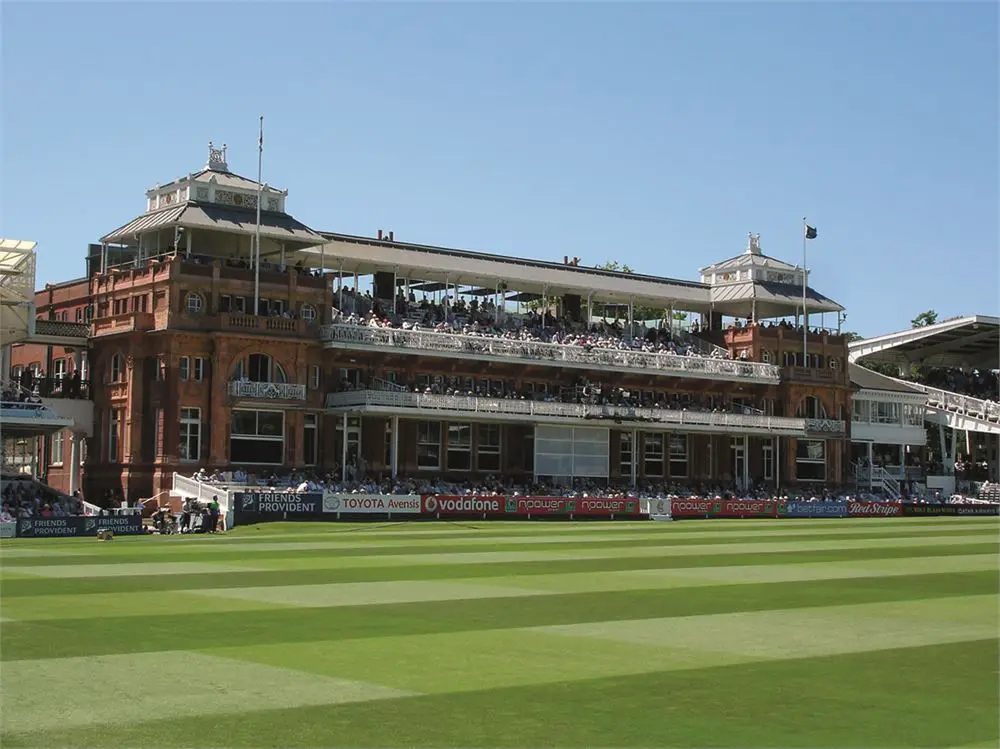The sight screen is one of the most important pieces of cricket equipment, however, since you often won’t actually notice it when watching the sport on the television, you might not really know what it is or does.
Sight Screen is a large screen that is placed on a cricket field directly behind both the wickets beyond the boundary. Sight Screens block distractions and make it easier for the batsman to spot the ball when batting. It is usually made of wood, cloth, LED lights, or other such material.
However, although they are a relatively uncomplicated element of many cricket grounds; there’s still plenty to learn about how and why they are used.
Why is a Sight Screen Used in Cricket?
Sight screens are designed to make the ball stand out from the background, so that the batsman can see it from the moment that the bowler releases it, through to the moment they make contact with it or it passes by them.
Quite simply, imagine you are stood at the crease as a batsman. Then imagine a big, tall, scary-looking bowler sprinting towards you at full tilt and hurling a solid cricket ball towards you at more than 90mph.
Chances are, you are going to want to be able to see that ball so that you can either hit it or, if needs must, duck out of its way before it hits you.
A well-positioned sight screen can be the differentiating factor on whether or not you manage to see the ball!
Where is a Sight Screen Placed on a Cricket Field?

In any game, there are two sight screens. One for each end of the wicket, so that batsmen have a fair chance of seeing the ball clearly at either end. In amateur cricket, the screens are often at ground level, but are tall enough so that the bowler’s arm does not extend above them from the batsman’s line of view.
The rules of the game state: “Sight screens should, if possible, be positioned wholly outside the playing area, as near as possible to the boundary line.”
In the professional game, sight screens are generally much larger and raised up into the stands. This is mainly for practical reasons, such as making it easier for people to move around the ground below the level of the sightscreen between deliveries; and building them into the structure of the stadium is more efficient than having to store cumbersome sight screens elsewhere.
In some cases, where the area beyond the boundary is limited, the sight screen might span the boundary or be placed inside the field of play by a few yards. It used to be the case that if the ball passed over or under it, in this scenario, it would be treated as if it were the boundary. However, if it hit it without bouncing then a six would not be given.
However, the rules now state that umpire’s ought to define the boundary before the game, making sure that there is adequate space for the sight screen to move without entering the field of play. This must be adhered to even if it means that the boundary is then uneven.
What Colour Sight Screen is Used for Which Game?

In amateur cricket, white is the most commonly used colour for sight screens, as red balls are most commonly used. The same applies for the longer forms of the professional game. This means a white sight screen is also used in Test Matches when a red cricket ball is used.
However, in shorter forms of the game, such as T20 and ODIs where white and pink balls are used, you will often see a darker colour sight screen being used so that the brightly coloured ball doesn’t get lost against a lighter background.
What is the Size of a Sight Screen?

There are no specific rules about the size of a sight screen. However, the majority of sight screens which you will see in amateur grounds are around 4.5m by 4.25m.
In professional cricket they can be much larger and many stadiums, such as the Sydney Cricket Ground have screens which are over 200 meters squared (36m x 6m).
What Material Are Sight Screens Made of?

Some sight screens are simply sheets supported by the tension of strings pegged into the ground. These are often the cheapest sight screens and are used typically in smaller and more amateur level grounds.
Others are made from wood which, although heavy, means that they will last a long time (with the odd lick of fresh paint) and will be able to take a few knocks should any batsman be able to hit a beautifully timed straight drive for six.
You might also find some sight screens made from metal, and increasingly they are made from more light-weight materials, such as UPVC and Polythene. In some cases, professional stadia have LED screens, which act as advertisement boards every other over.
Typically, they will be made of around twelve slats which have gaps between them to allow air to flow through. You don’t want your screen taking off as it were a sailing boat!
Are Sight Screens Supposed to Move?

As we’ve seen, sight screens come in different forms. However, they don’t just come in different sizes, colours and even shapes; but they also have different levels of mobility. That’s why lighter materials are increasingly favoured on a sight screen, so that it is easier to move your screen as and when it is required.
Those pegged into the ground, as mentioned above, are obviously much more difficult to be moved. However, many sight screens are placed on a deck of wheels, so that they can be moved with relative ease depending on where the bowler’s arm releases the ball.
After all, if the bowler is left-handed and is bowling to a right-handed batsman from around the wicket, then the line of the ball will be very different to if the same bowler was bowling to the same batsman over the wicket.
This is why many sight screens are designed so that they can quickly be moved between overs, and even between deliveries, in order to give bowlers an advantage simply for changing the direction from which they bowl.
In professional stadia, where they are embedded into the structure of the stands, they often move on tracks as if they were curtains. The famous commentator Henry Blowfield described in his autobiography how this caused chaos in the Lord’s pavilion when it was first introduced.
Members of the crowd (who included royalty) would have to sprint from one end of the famous ‘Long Room’ to the other, in order to retain their view of the match each time the screen was moved.
Who Decides whether a Sight Screen Should be Moved?

You might think that this is a duty which falls upon the umpires. After all, they’re responsible for making sure the wickets are in placed, the ground is playable, and the rules are being adhered to. Before the start of play they must make sure that they are happy with the positioning of the site screens with regards to the boundary but once play begins their only role is to make sure that players do not stand between the bowler and the sight screen.
It is the responsibility of the batsman to ask for the sight screen to be moved if he is not happy with its position and if it does not in fact lie in his line of sight. It is their prerogative to make sure before the bowler bowls the ball that they are happy with its position.

